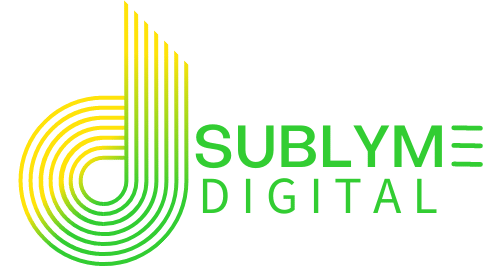How to Balance Creativity and SEO for Engaging Content
You know what? Writing content that appeals to both humans and machines can feel like juggling two very different priorities. On one hand, you want your content to be relatable, engaging, and easy to read. On the other, you need it to be optimized for search engines with the right structure, keywords, and metadata.
Here’s the thing: It doesn’t have to be an either-or situation. You can absolutely create content that checks both boxes. When you write for humans, you’re building trust and connection. When you write for machines, you’re ensuring that your content gets discovered.
In this blog, we’ll explore how to strike the perfect balance. Whether you’re a content marketer, business owner, or just someone passionate about writing, these tips will help you create content that resonates with readers and ranks well on search engines.
Key Takeaways:
- Writing for both humans and machines involves balancing engaging storytelling with SEO optimization.
- Use a conversational tone to connect with readers while including semantic keywords for search engines.
- Structure content with clear headings, bullet points, and scannable sections for readability.
- AI tools can enhance optimization, but human creativity and empathy are irreplaceable.
- Regular updates and quality content keep your audience and search engines happy.
Why Writing for Humans and Machines Matters
The Changing Landscape of Content Creation
Let me explain. Back in the day, SEO was all about stuffing keywords into your content like a Thanksgiving turkey. But search engines have evolved. Today, they prioritize user experience, intent, and relevance.
Think of it like this: If your content doesn’t resonate with readers, they’ll leave your page faster than a cat spotting a vacuum cleaner. And search engines? They’ll notice. That’s why it’s crucial to write for both audiences.
Bridging the Gap
Honestly, the gap between human-friendly content and machine-optimized content isn’t as wide as it seems. Both audiences value clarity, structure, and relevance. When you focus on these elements, you’re already halfway there.
How to Write for Humans
1. Use a Conversational Tone
You know what? Nobody wants to read content that sounds like it was written by a robot. People want to feel like they’re having a conversation with a real person.
For example, instead of saying, “It is essential to consider various factors when optimizing content,” try, “You’ve got to think about a few key things when optimizing your content.” It’s more relatable, right?
2. Tell Stories
Here’s the thing: Stories are like the secret sauce of great content. They grab attention, evoke emotions, and make your message stick.
Let’s say you’re writing about SEO. Instead of diving straight into technical jargon, start with a story about how a small business owner used SEO to triple their website traffic. It’s engaging and sets the stage for the tips you’re about to share.
3. Make It Scannable
Honestly, most people don’t read online content word for word—they skim. Use headings, subheadings, bullet points, and short paragraphs to make your content easy to scan.
4. Solve Problems
You know what? People search for content because they have questions or problems they need solved. Address their pain points directly and offer actionable solutions.
Writing for both humans and machines isn’t about compromise—it’s about creating harmony between creativity and optimization.

How to Write for Machines
1. Optimize for Keywords
Let me explain. Keywords are still important, but it’s not about cramming them into every sentence. Use your primary keywords naturally and sprinkle in semantic variations to give search engines the context they need.
2. Nail Your Metadata
Honestly, metadata is like the first impression of your content—for both humans and machines. Write compelling meta titles and descriptions that include your target keywords and entice clicks.
3. Structure Content for SEO
You know what? Search engines love well-structured content. Use clear headings (H1, H2, H3), include alt text for images, and add schema markup to make your content easier for algorithms to understand.
4. Leverage AI Tools
Here’s the thing: AI tools like Grammarly, SurferSEO, and SEMrush can help you analyze your content for readability, keyword usage, and optimization. But remember, these tools are assistants, not replacements for your creativity.
Learn More About SEO Content Optimization
If you want to dive deeper into creating content that aligns with AI-driven tools like large language models, check out our guide on Creating SEO Content for Large Language Models. It’s packed with actionable tips to make your content both human-friendly and machine-readable.
Balancing Creativity and Optimization
Focus on User Intent
Honestly, understanding user intent is the key to balancing creativity with optimization. Are they looking for information, a solution, or a product? Tailor your content to meet their needs.
Combine Data with Empathy
You know what? Data can tell you what’s working, but empathy tells you why. Use analytics to identify trends, but write with your audience’s emotions, challenges, and aspirations in mind.
Update Regularly
Let me explain. Content isn’t a one-and-done deal. Regular updates keep your content fresh and relevant for both humans and machines.
Final Thoughts
Here’s the bottom line: Writing for both humans and machines is an art and a science. It requires creativity to connect with readers and technical skills to optimize for search engines.
But here’s the thing: You don’t have to choose between the two. By focusing on user intent, structuring your content effectively, and leveraging the right tools, you can create pieces that engage your audience and rank well.
FAQs:
Answer: Use a conversational tone, tell stories, and address your audience’s pain points directly.
Answer: Semantic keywords are related terms that provide context to your primary keyword. They help search engines understand the broader meaning of your content.
Answer: AI tools analyze your content for readability, keyword usage, and SEO performance, helping you refine your approach.
Answer: Writing for both ensures your content is engaging for readers while ranking well on search engines, maximizing visibility and impact.
Answer: Regular updates, at least once a year, are recommended to keep your content relevant and aligned with current trends.
Success Stories
365 Data Centers
Discover how we rapidly rebuilt and optimized a 30-page website for 365 Data Centers, restoring their online presence and managing digital ad campaigns across key regions to drive engagement and growth.
XTECH Football Pads
Discover how we transformed XTECH Football Pads‘ digital presence, boosting their online sales and tripling website traffic through innovative website development and user experience enhancements.
BeEarth Foundation
Discover how we partnered with the BeEarth Foundation to develop a website that aligns with their mission of sustainability and global engagement. Our work has significantly increased their online visibility and engagement, supporting their efforts to promote sustainable development.
We Recycle Solar
Learn how we illuminated digital success for We Recycle Solar by completely redesigning their website to reflect their leadership in the growing solar recycling industry and implementing strategic digital advertising campaigns that enhanced their visibility at key industry events.
Preferred Home Health Care & Nursing Services
Explore how we elevated the digital presence of Preferred Home Health Care & Nursing Services by enhancing their website for better lead generation, building a dedicated site for staff recognition, and optimizing SEO for their location pages.
What Our Clients Say: Elevating Online Success
We Build Cool
Let's Build Something Sublyme
Struggling to create content that resonates with humans and satisfies search engines? Sublyme Digital specializes in crafting SEO-friendly, engaging content. Contact us today to get started!



